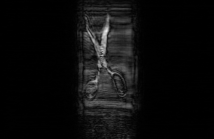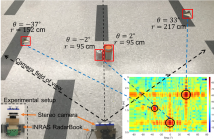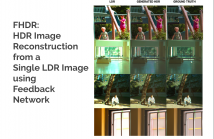
The 7th IEEE Global Conference on Signal and Information Processing (GlobalSIP) focuses on signal and information processing with an emphasis on up-and-coming signal processing themes. The conference features world-class plenary speeches, distinguished symposium talks, tutorials, exhibits, oral and poster sessions, and panels. GlobalSIP is comprised of co-located General Symposium and symposia selected based on responses to the call-for-symposia proposals.

- Read more about Learning Product Codebooks using Vector-Quantized Autoencoders for Image Retrieval
- Log in to post comments
SIP2019.pdf
- Categories:
 33 Views
33 Views
- Read more about Serious Games and ML for Detecting MCI
- Log in to post comments
Our work has focused on detecting Mild Cognitive Impairment (MCI) by developing Serious Games (SG) on mobile devices, distinct from games marketed as 'brain training' which claim to maintain mental acuity. One game, WarCAT, captures players' moves during the game to infer processes of strategy recognition, learning, and memory. The purpose of our game is to use the generated game-play data combined with machine learning (ML) to help detect MCI. MCI is difficult to detect for several reasons.
- Categories:
 237 Views
237 Views
- Read more about MAC ID Spoofing-Resistant Radio Fingerprinting
- Log in to post comments
We explore the resistance of deep learning methods for radio fingerprinting to MAC ID spoofing. We demonstrate that classifying transmission slices enables classification of a transmission with a fixed-length input deep classifier, enhances shift-invariance, and, most importantly, makes the classifier resistant to MAC ID spoofing. This is a consequence of the fact that the classifier does not learn to use the MAC ID to classifying among transmissions, but relies on other inherent discriminating signals, e.g., device imperfections.
- Categories:
 65 Views
65 Views
- Read more about 3-D MIMO-SAR Imaging Using Multi-Chip Cascaded Millimeter-Wave Sensors
- Log in to post comments
Integration of multi-chip cascaded multiple-input multiple-output (MIMO) millimeter-wave (mmWave) sensors with synthetic aperture radar (SAR) imaging will enable cost-effective and scalable solutions for a variety of applications including security, automotive, and surveillance. In this paper, the first three-dimensional (3-D) holographic MIMO-SAR imaging system using cascaded mmWave sensors is designed and implemented. The challenges imposed by the use of cascaded mmWave sensors in high-resolution MIMO-SAR imaging systems are discussed.
- Categories:
 517 Views
517 Views
- Read more about Using Multimodal Data for Automated Fidelity Evaluation in Pivotal Response Treatment Videos
- Log in to post comments
Research has shown that caregivers implementing
pivotal response treatment (PRT) with their child with autism
spectrum disorder (ASD) helps the child develop social and
communication skills. Evaluation of caregiver fidelity to PRT in
training programs and research studies relies on the evaluation
of video probes depicting the caregiver interacting with his
or her child. These video probes are reviewed by behavior
analysts and are dependent on manual processing to extract
data metrics. Using multimodal data processing techniques and
- Categories:
 31 Views
31 Views
- Read more about Exploiting Structural Information in Camera Aided Radar Parameter Estimation
- Log in to post comments
The sparse nature of the ranging and spatial angle
parameter space has been exploited by many radar parameter
estimation algorithms in literature. We note that real world
reflections are not sporadically sparse in the parameter space and
typically exhibit smooth variation effects with non-zero entries
occurring in clusters. In this paper, we explicitly model this
additional structural information into our estimation algorithm
and propose a non-convex regularization of the linear observation
- Categories:
 69 Views
69 Views
- Read more about $\alpha$ Belief Propagation as Fully Factorized Approximation
- Log in to post comments
poster.pdf
- Categories:
 24 Views
24 Views
- Read more about FHDR: HDR Image Reconstruction from a Single LDR Image using Feedback Network
- Log in to post comments
High dynamic range (HDR) image generation from a single exposure low dynamic range (LDR) image has been made possible due to the recent advances in Deep Learning. Various feed-forward Convolutional Neural Networks (CNNs) have been proposed for learning LDR to HDR representations. To better utilize the power of CNNs, we exploit the idea of feedback, where the initial low level features are guided by the high level features using a hidden state of a Recurrent Neural Network.
- Categories:
 391 Views
391 Views
- Read more about Poster: Generative-Discriminative Crop Type Identification using Satellite Images
- Log in to post comments
Crop type identification refers to distinguishing certain crop from other landcovers, which is an essential and crucial task in agricultural monitoring. Satellite images are good data input for identifying different crops since satellites capture relatively wider area and more spectral information. Based on prior knowledge of crop phenology, multi-temporal images are stacked to extract the growth pattern of varied crops.
- Categories:
 28 Views
28 Views